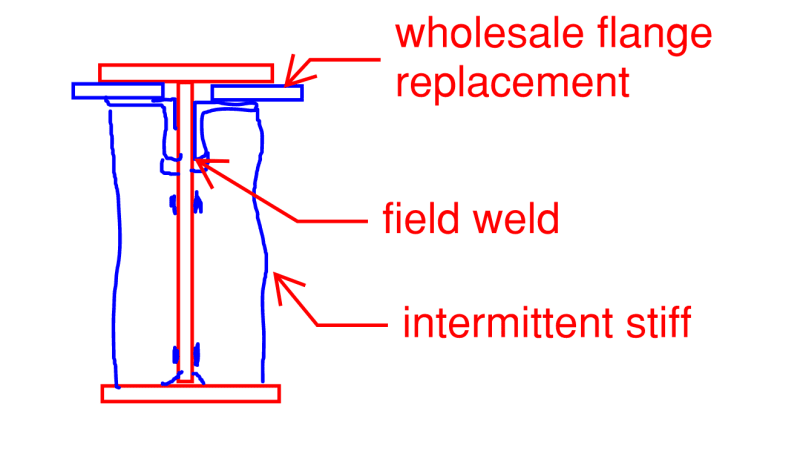Hello,
I have a 22' long W33x130 girder with corrosion issues. The top flange has become so thin that we now have to cut out the top 4" of the girder and weld it back in 2'-0" sections. The part that I'm struggling with is that this beam will still have a good amount of load on it when we cut it. We are able to remove the concrete slab + equipment on 1 side of the the girder, but not the other. Attached is my plan for making this repair. You can see that when we make the cut, the W33 essentially turns into a very tall upside down WT member (which does not check). To combat this, I plan to weld in 3/4" plates to prior to essentially turn it back into a shorter W member.
1) If possible, please provide comment on the plan itself.
2) I have designed the 3/16" Fillet for shear flow, but I am not sure if there is anything else that I need to consider. It just seems like a weak connection to me.
Thank you!
I have a 22' long W33x130 girder with corrosion issues. The top flange has become so thin that we now have to cut out the top 4" of the girder and weld it back in 2'-0" sections. The part that I'm struggling with is that this beam will still have a good amount of load on it when we cut it. We are able to remove the concrete slab + equipment on 1 side of the the girder, but not the other. Attached is my plan for making this repair. You can see that when we make the cut, the W33 essentially turns into a very tall upside down WT member (which does not check). To combat this, I plan to weld in 3/4" plates to prior to essentially turn it back into a shorter W member.
1) If possible, please provide comment on the plan itself.
2) I have designed the 3/16" Fillet for shear flow, but I am not sure if there is anything else that I need to consider. It just seems like a weak connection to me.
Thank you!

